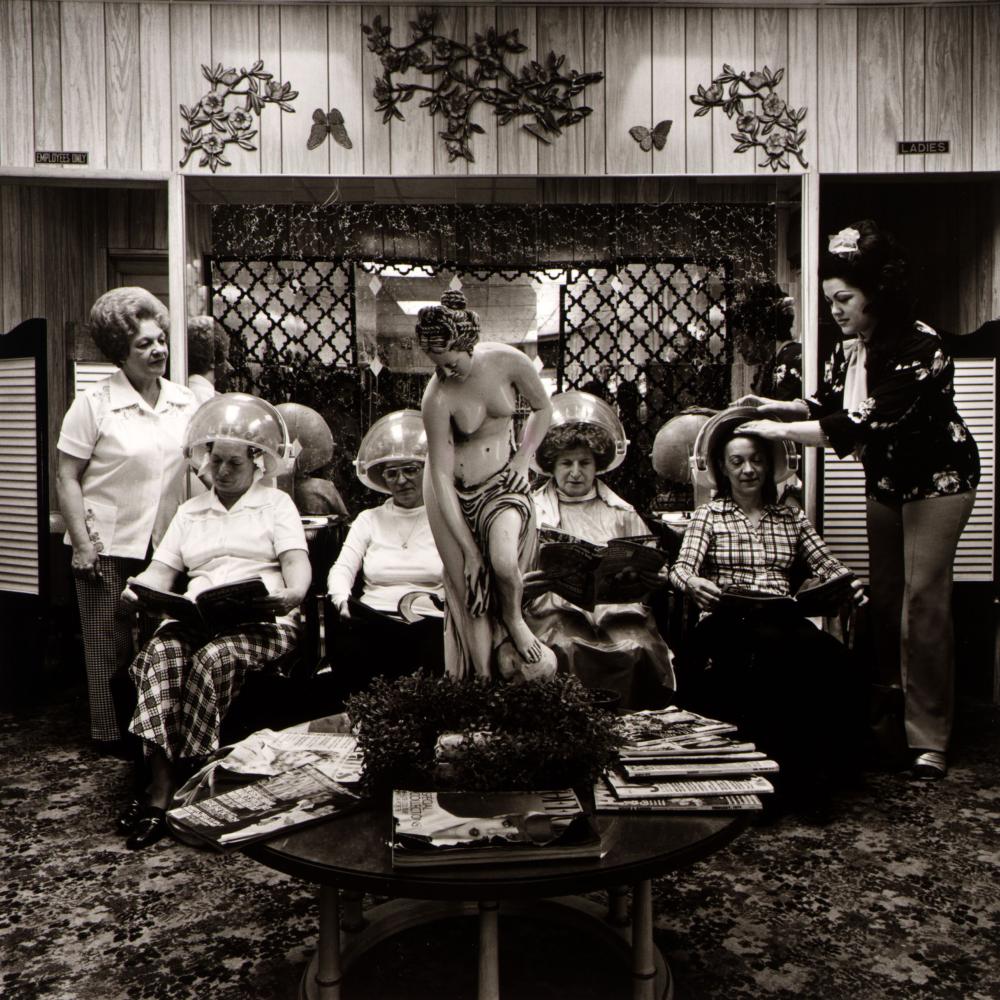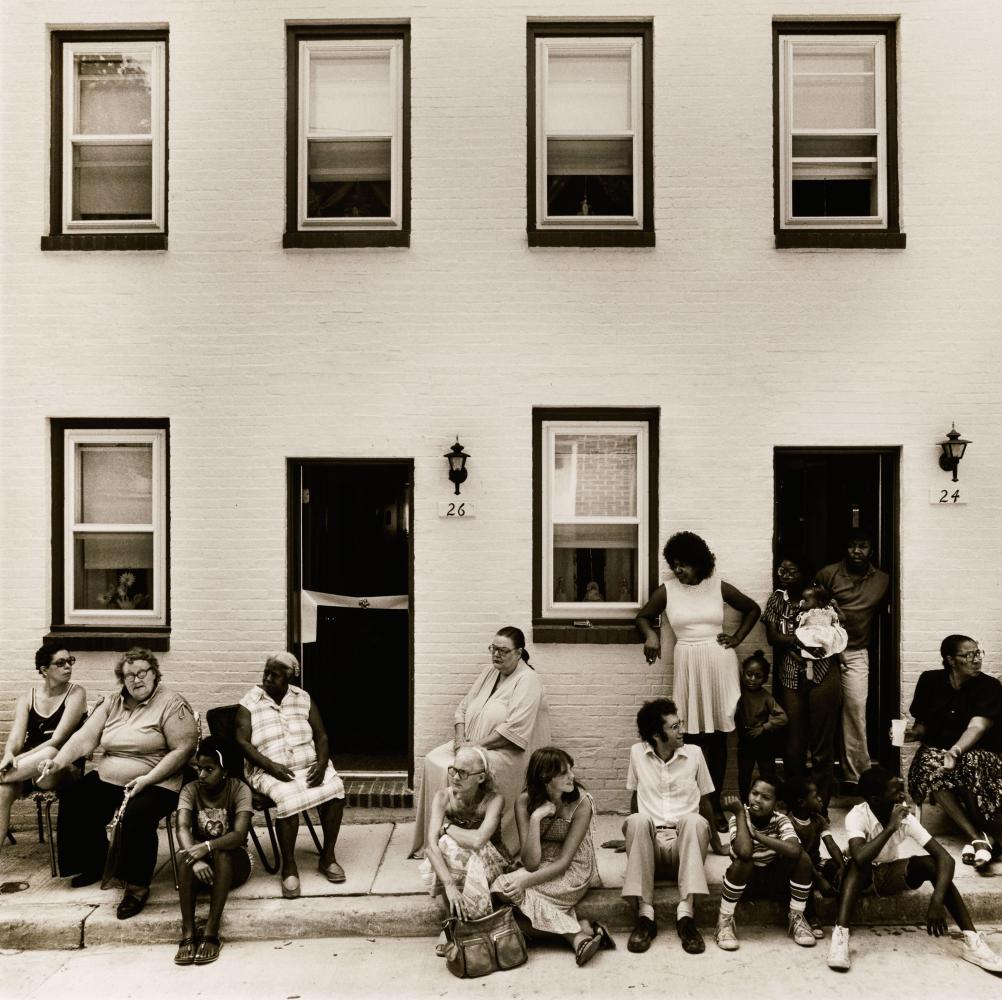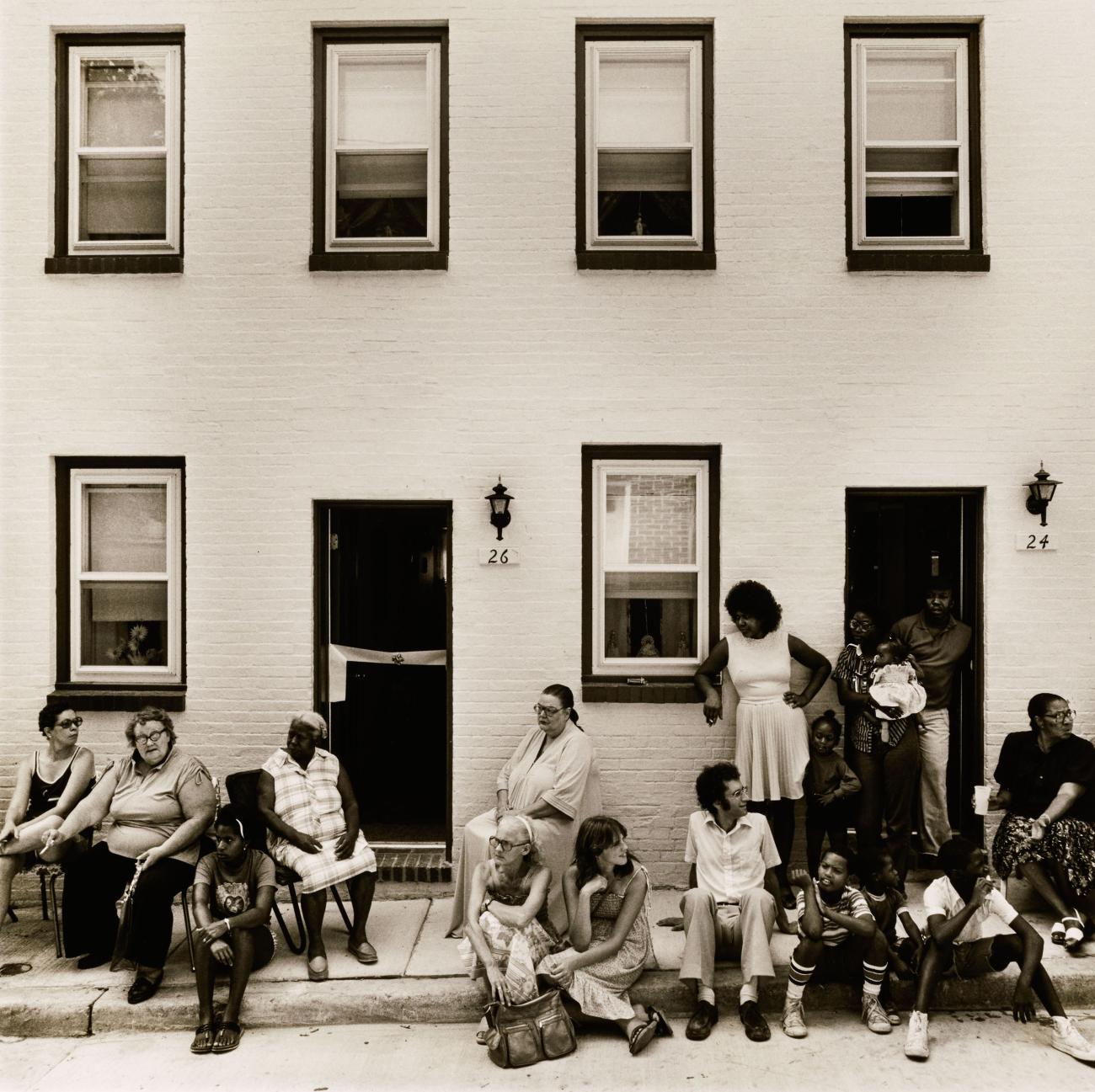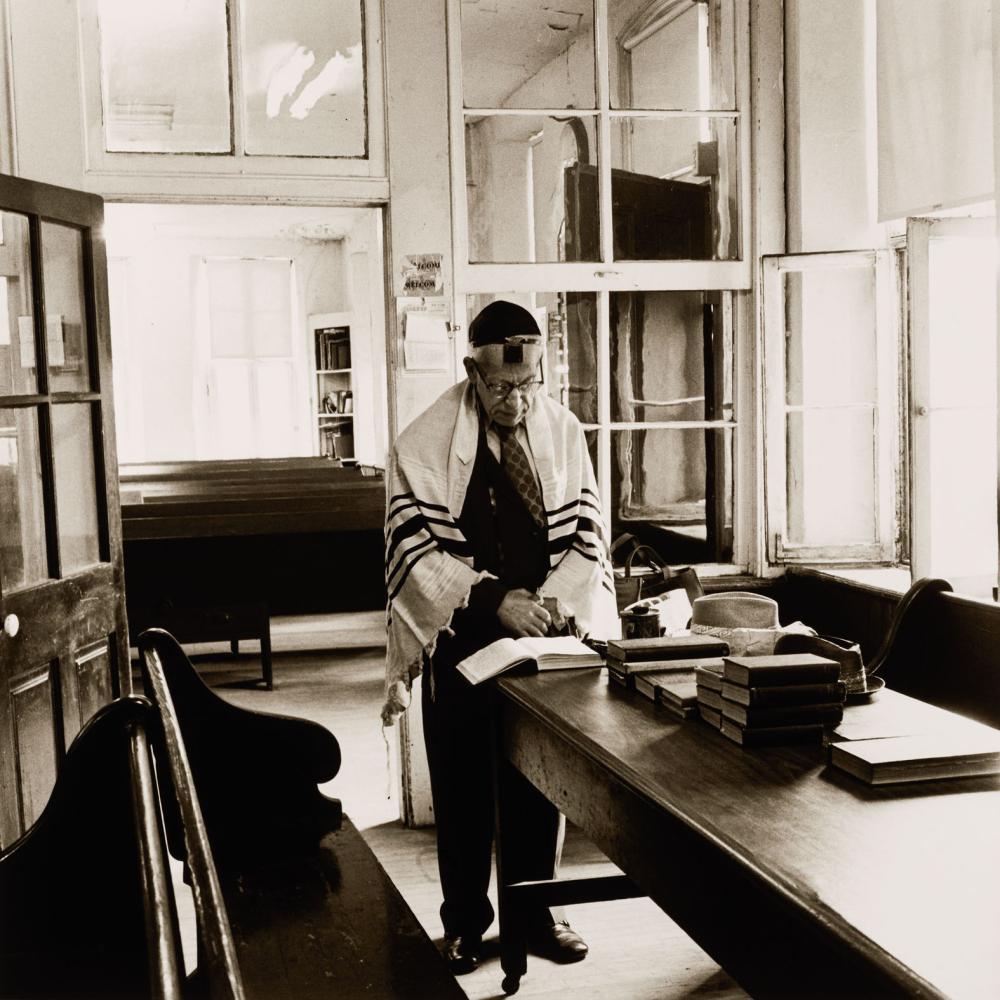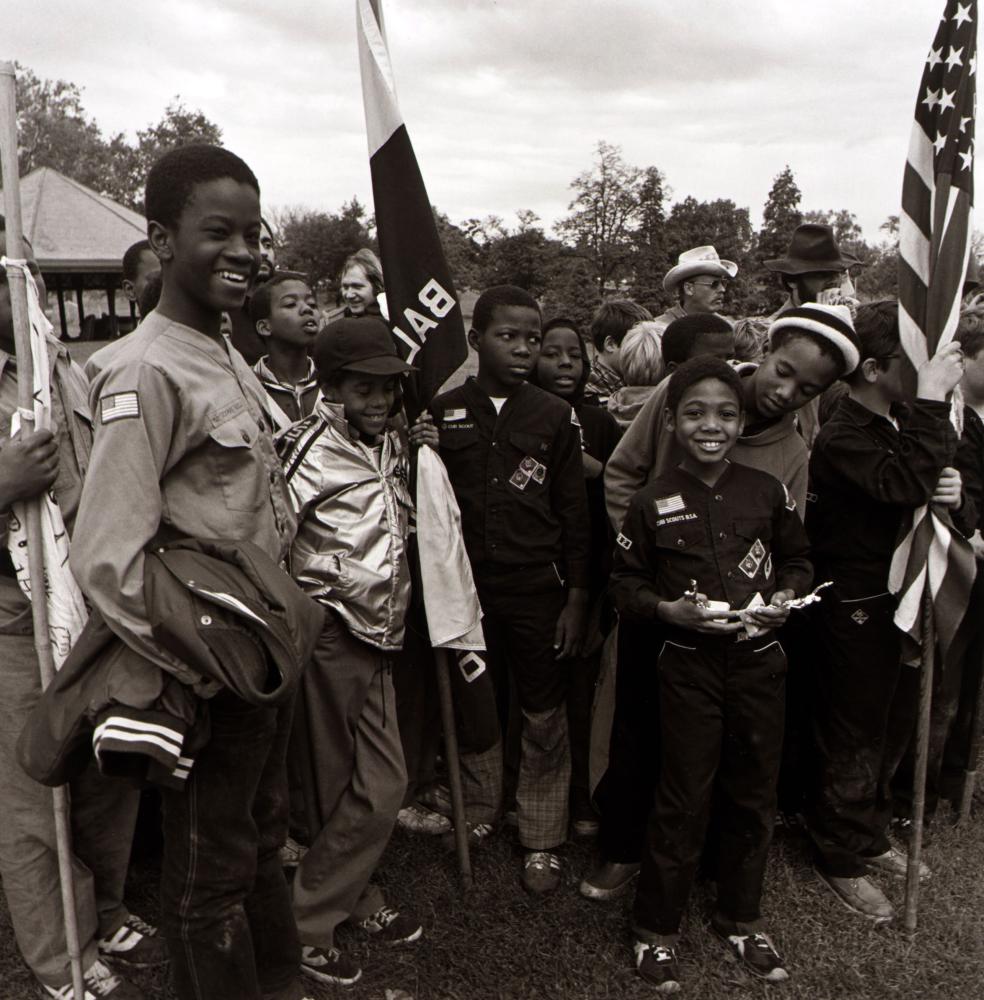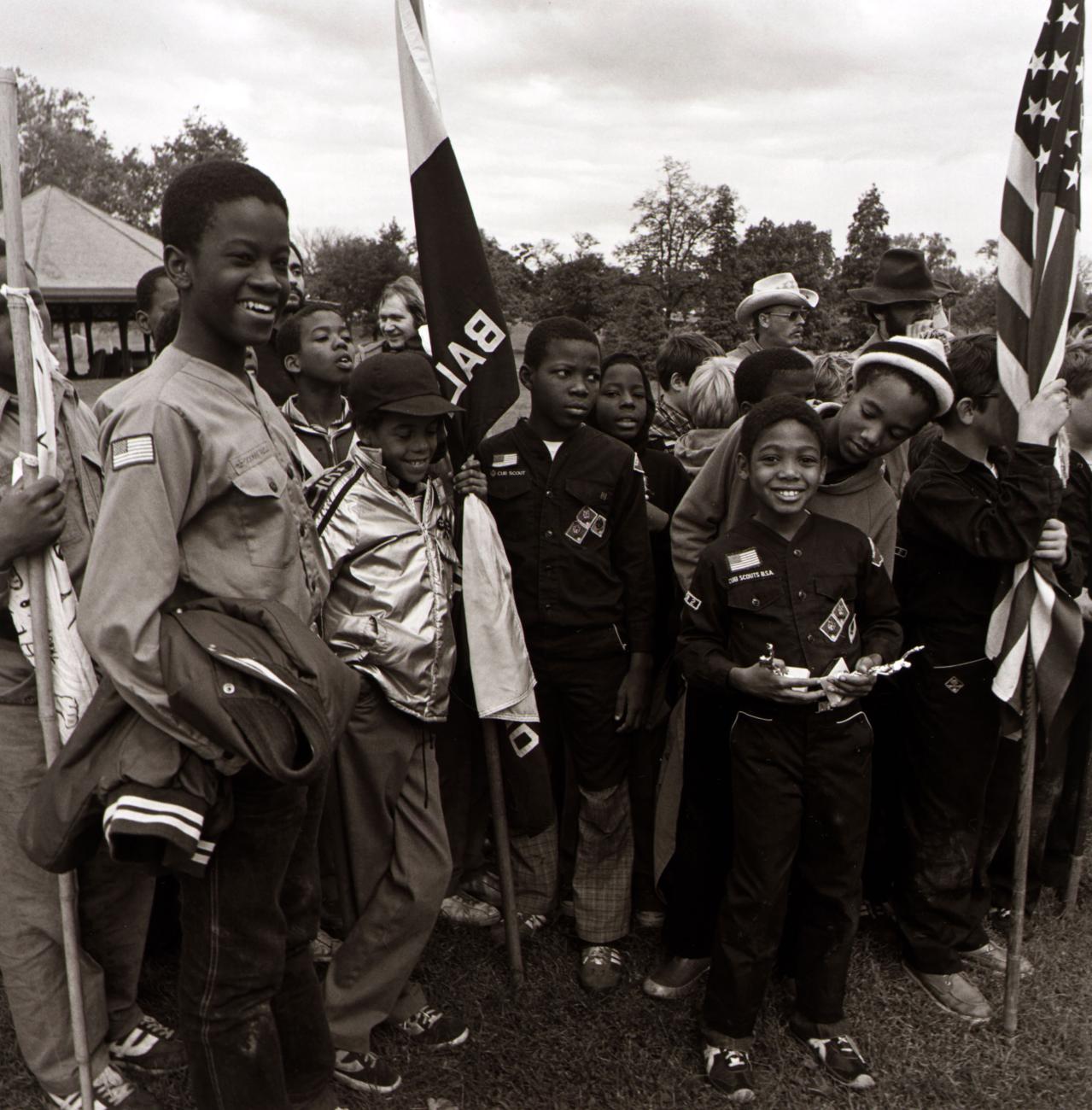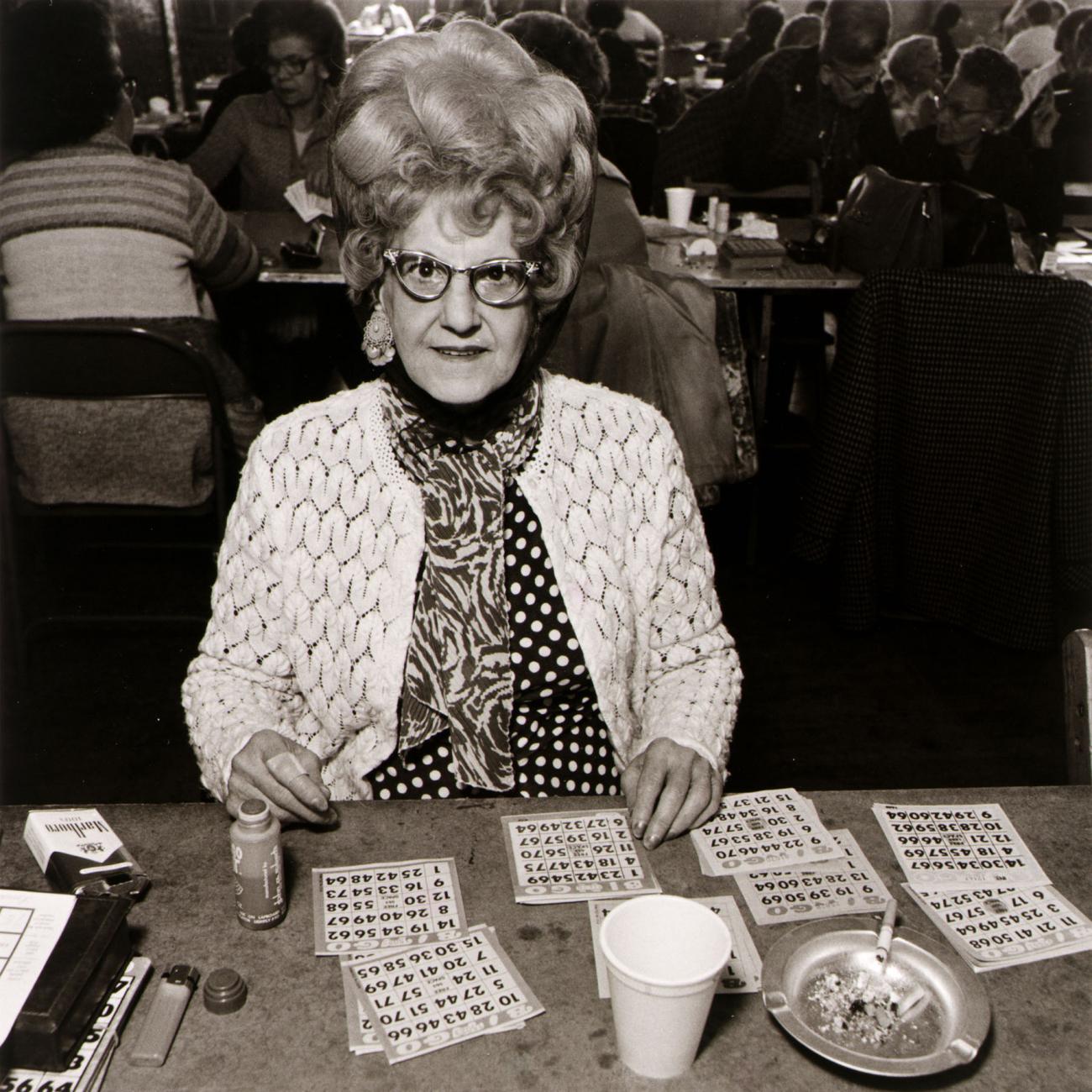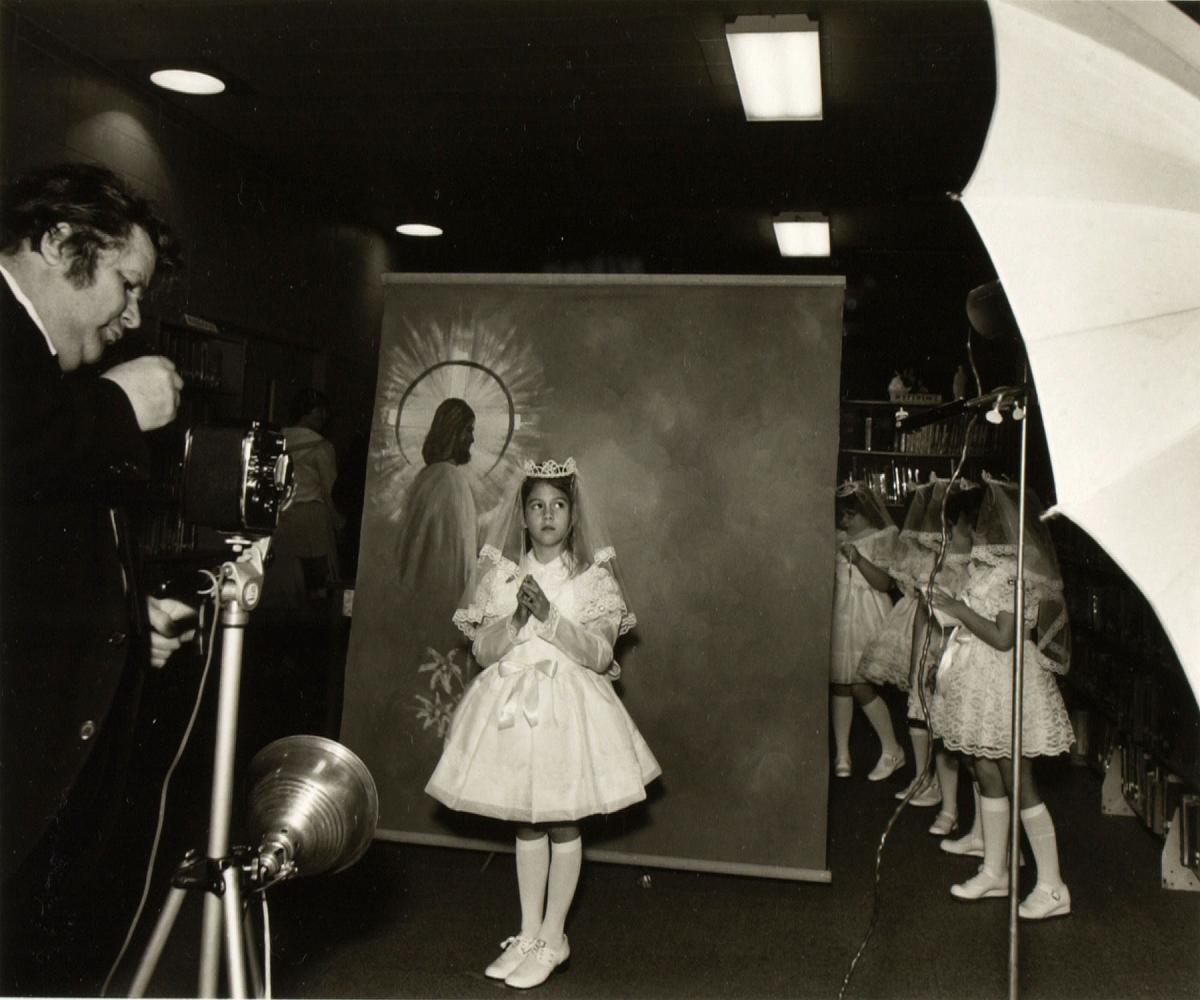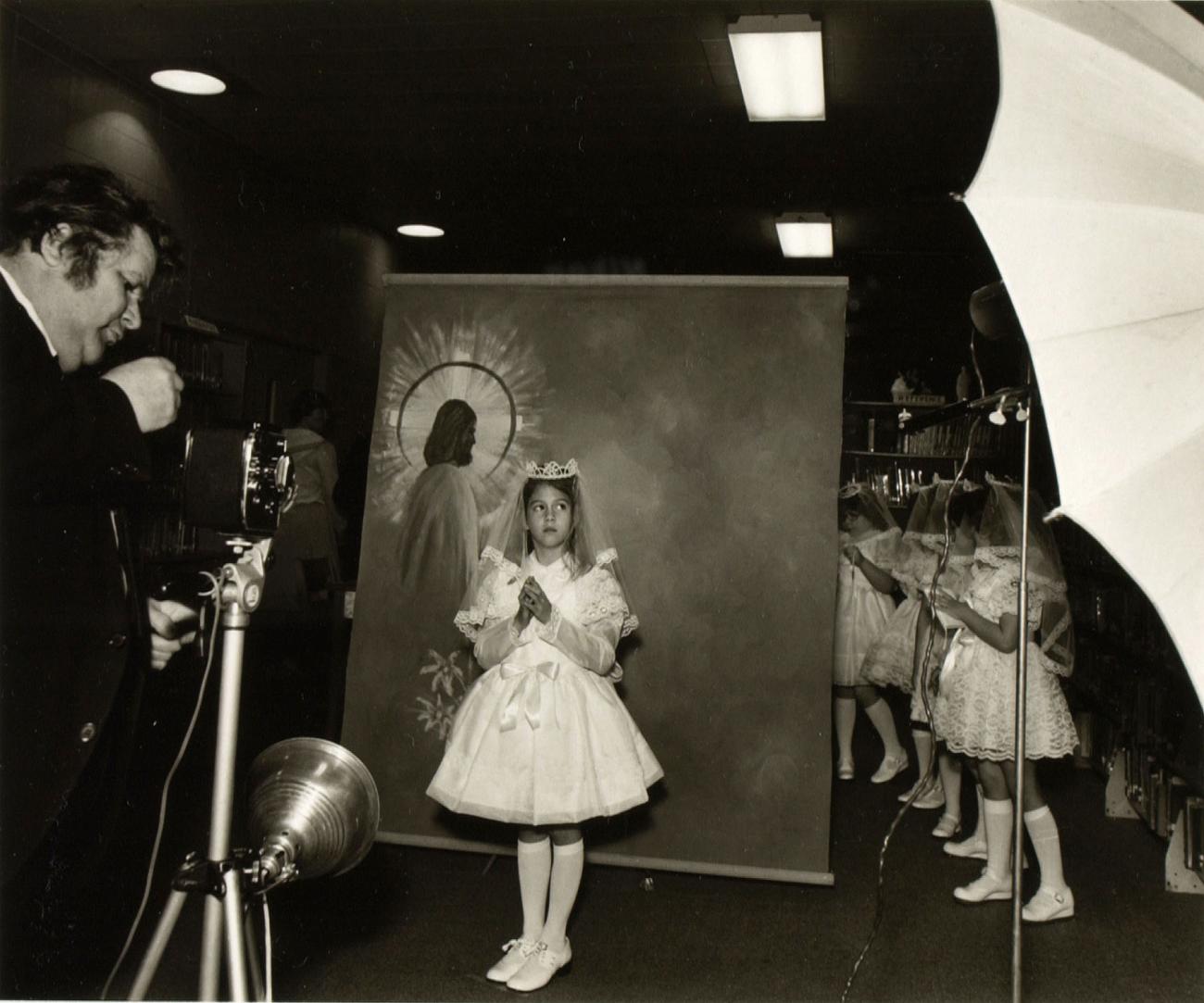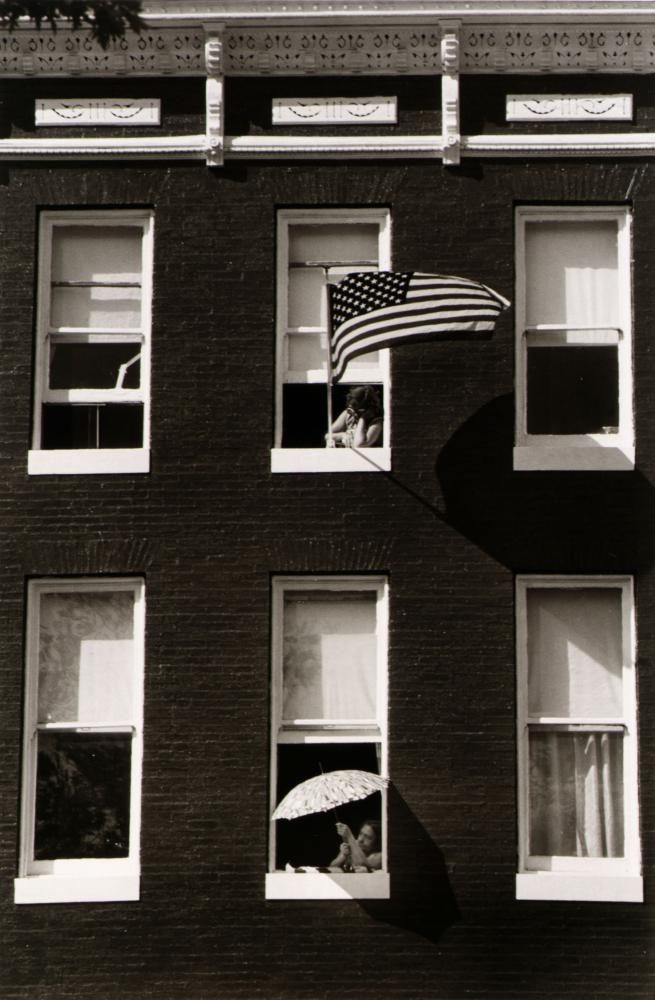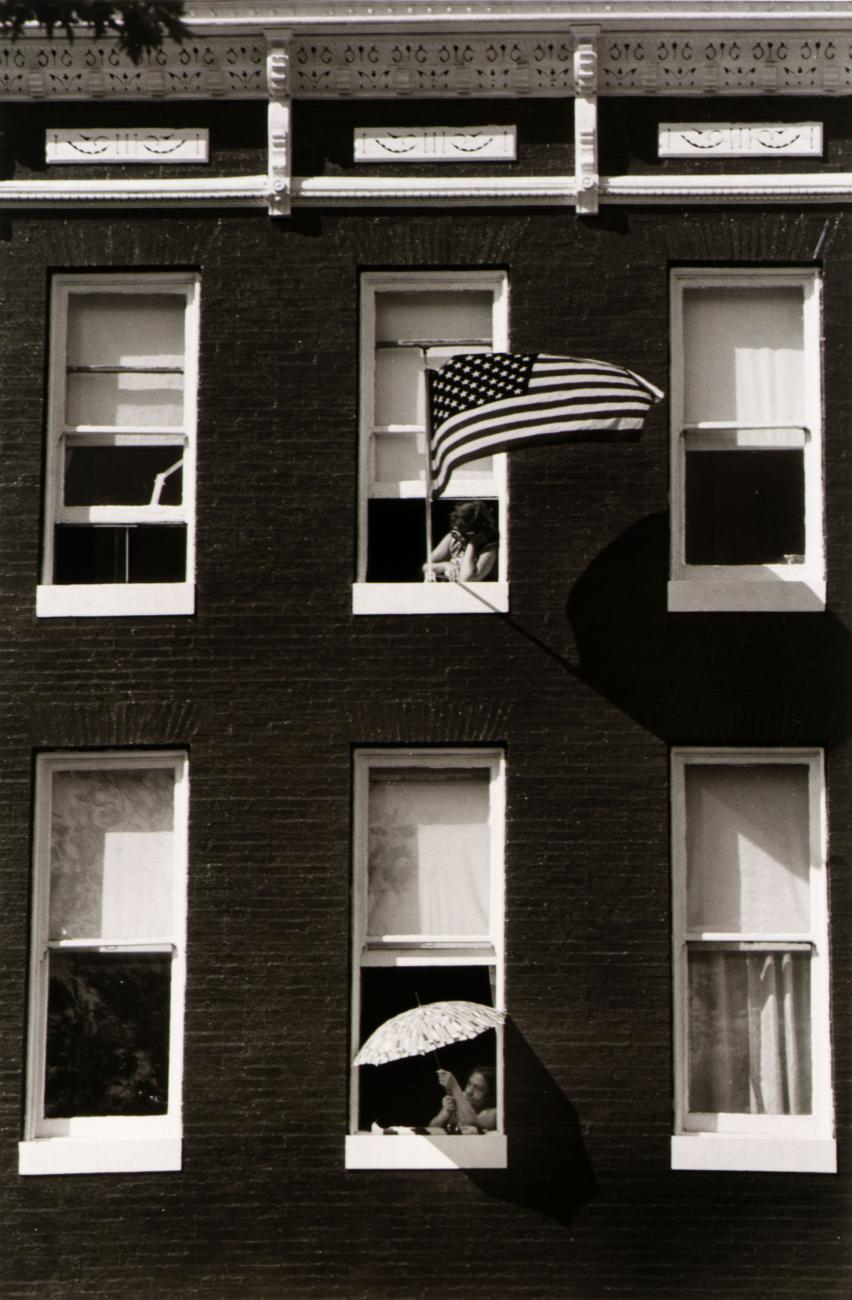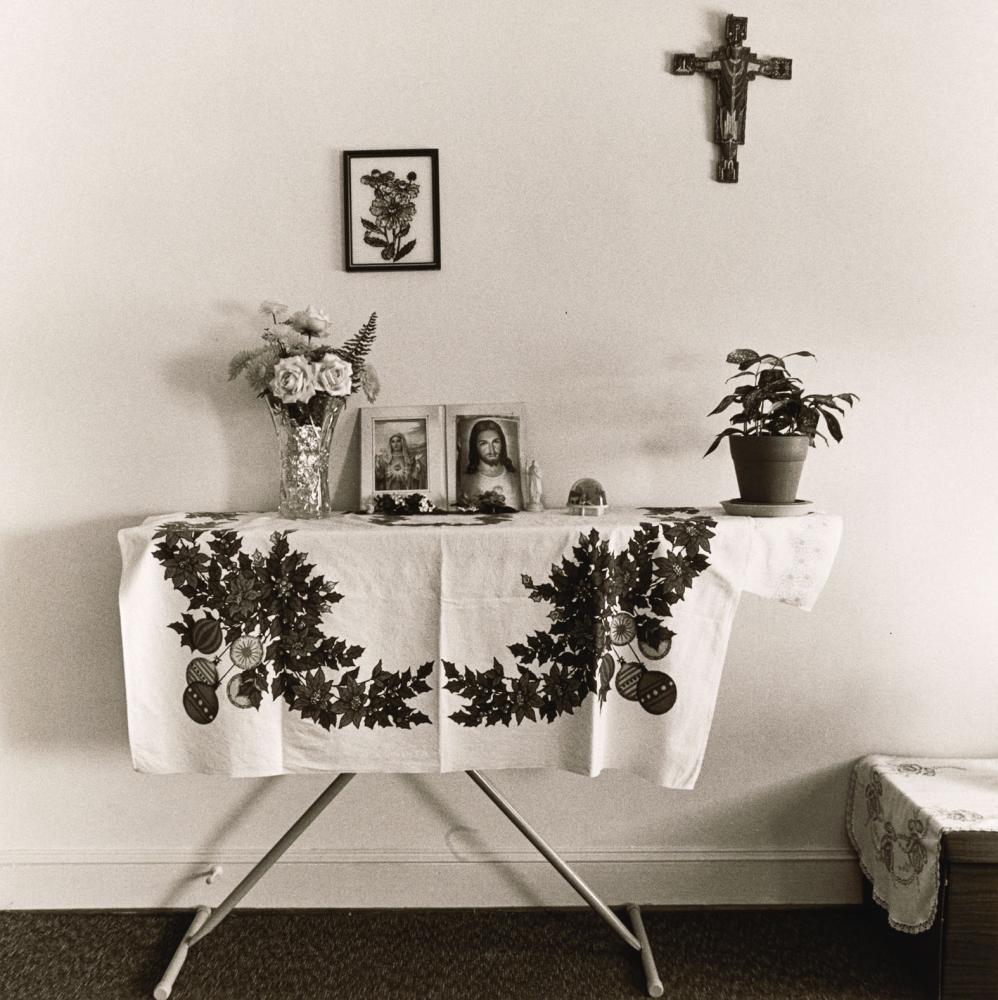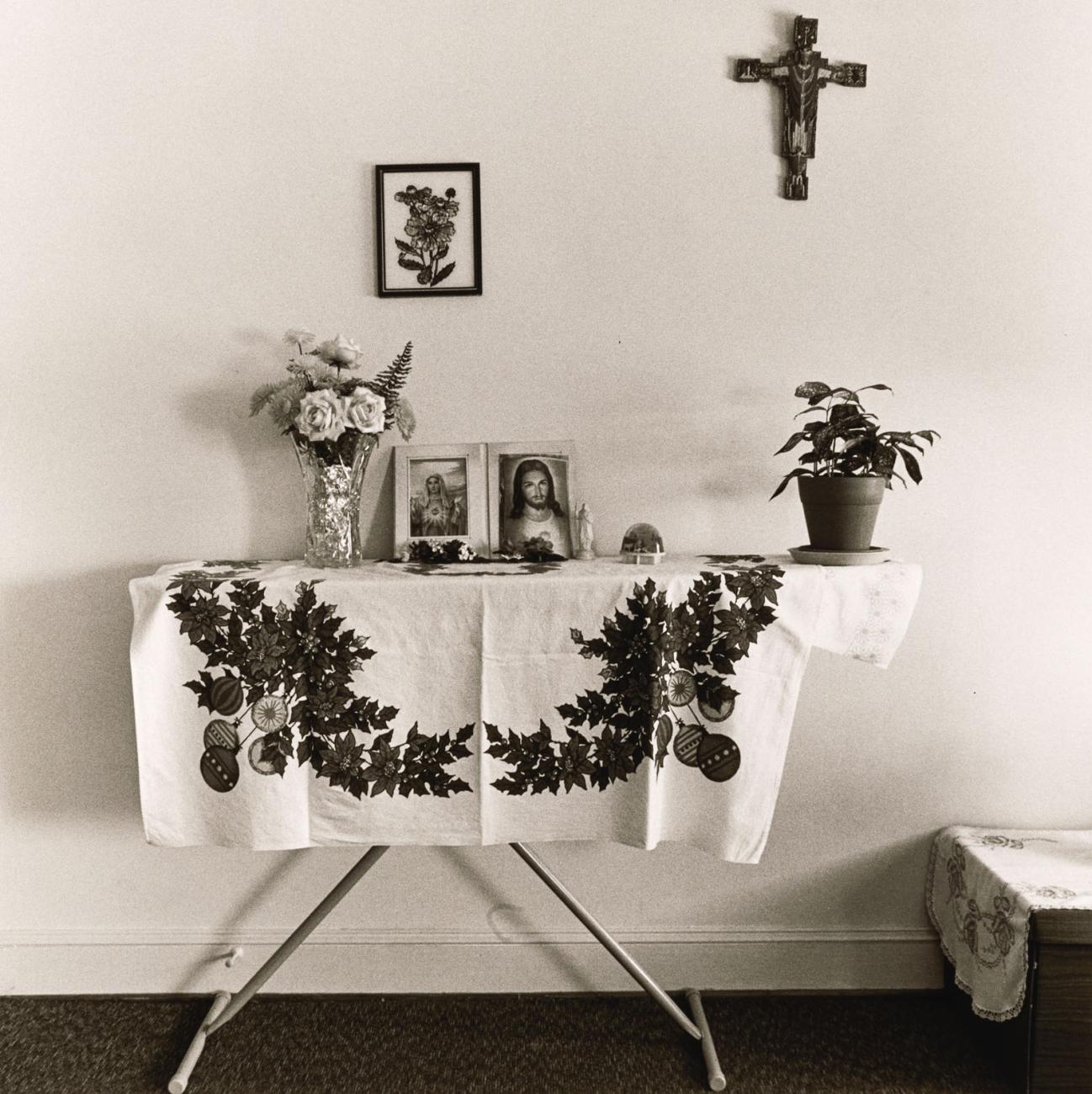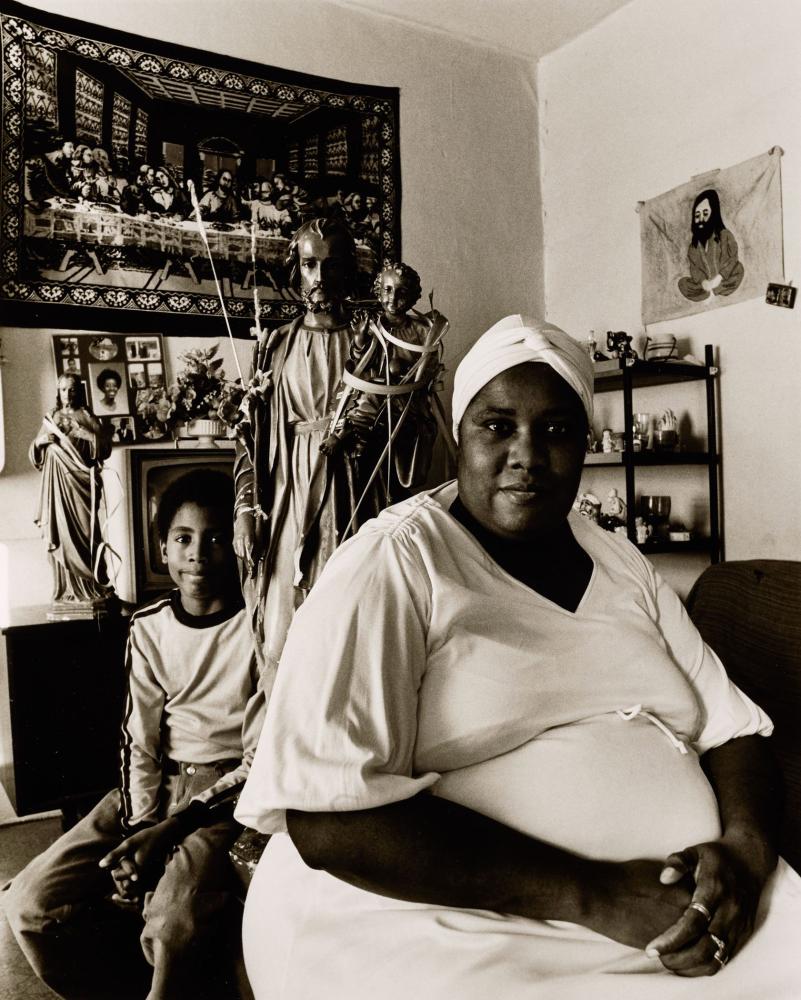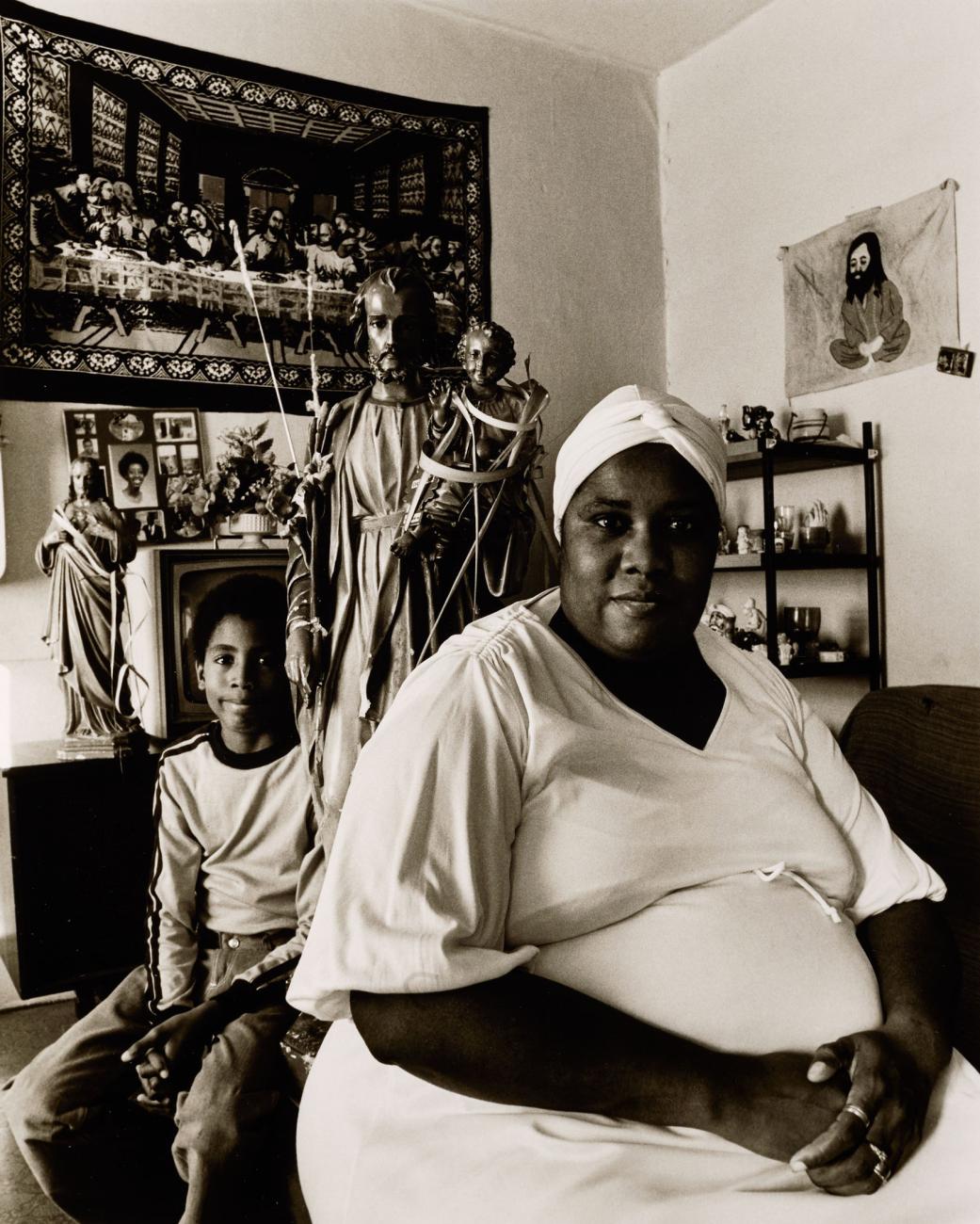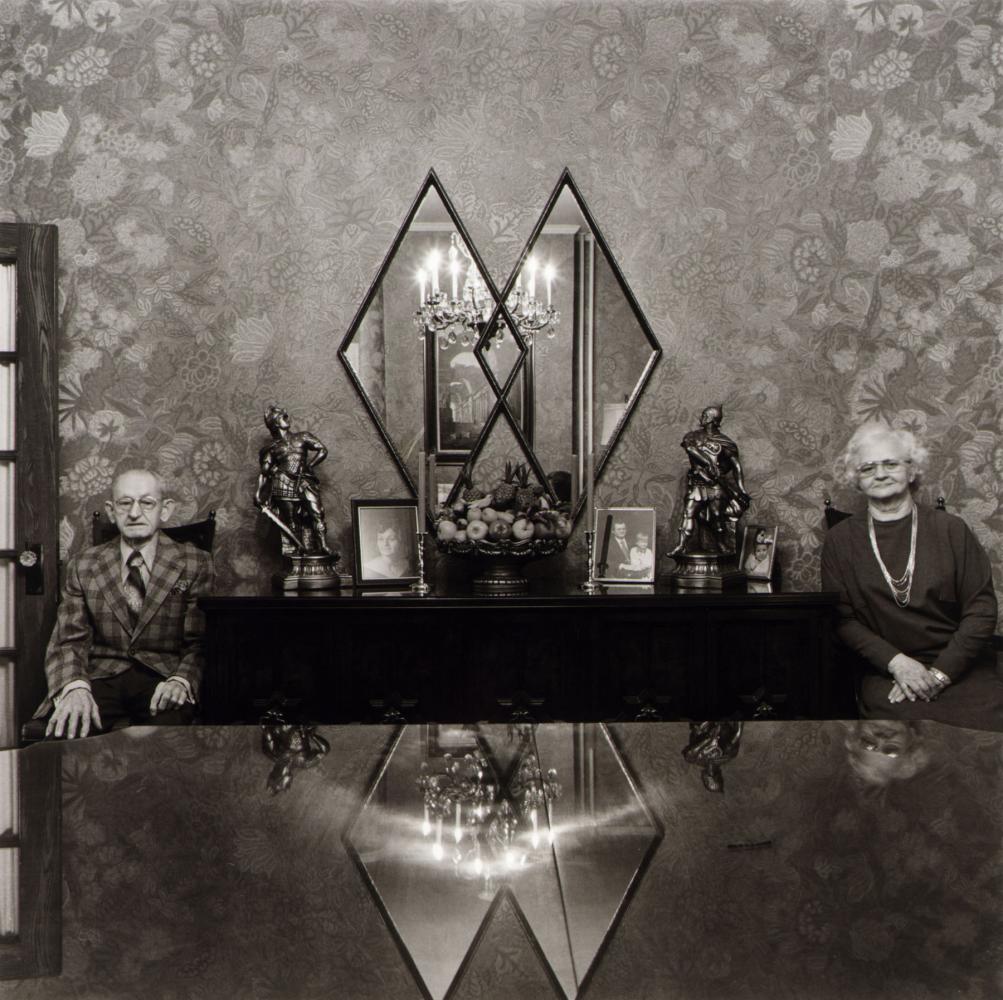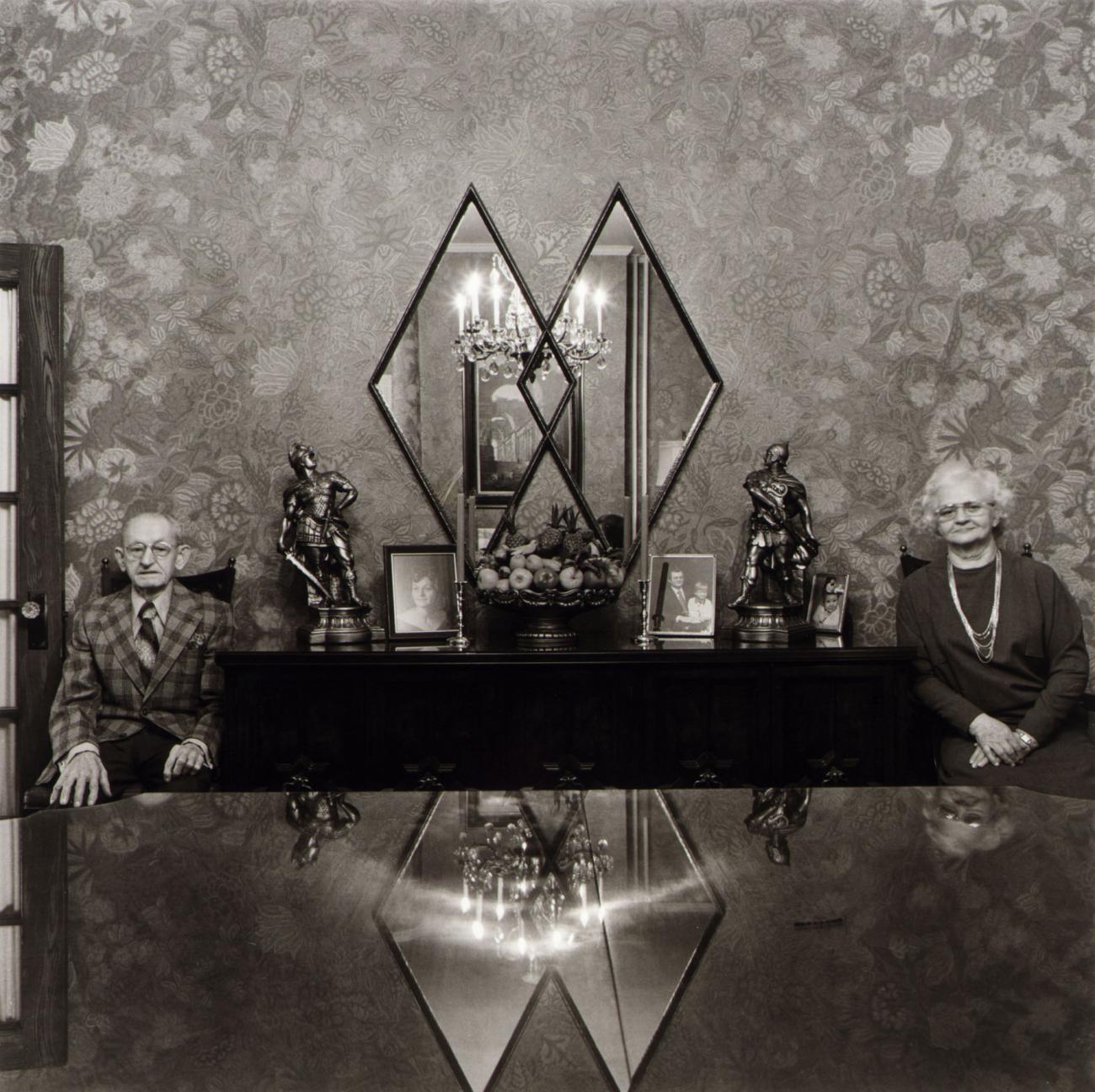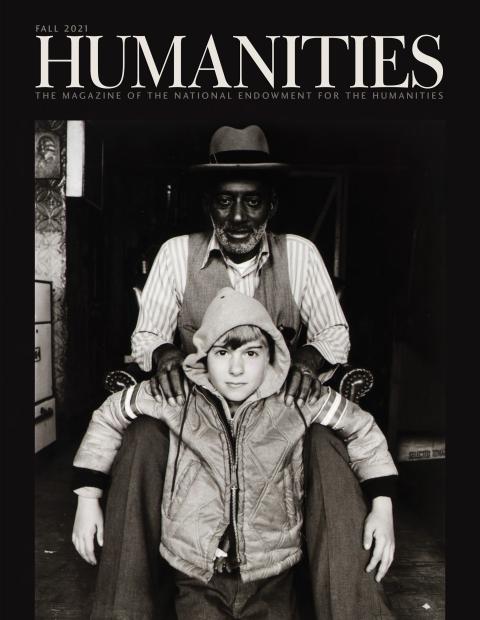Today, while many urban communities seem to be fighting a losing battle against physical, emotional, and spiritual decay, East Baltimore continues to grow and change, preserving its culture, integrity, and humanity.” —Photographer Linda Gail Rich, 1977, from an application for a grant from the National Endowment for the Arts
The NEH-supported exhibit at the Smithsonian American Art Museum is called “Welcome Home: A Portrait of East Baltimore,” but the photographs on display—capturing more than 100 irretrievable moments between 1975 and 1980—depict a world along the shores of the Patapsco that is all but gone.
While images of wash on the line and tiny parlors (accompanied, perhaps, by the smell of kielbasa on Easter morning) linger among eastside Baltimoreans who were kids when the photos were taken, the way of life captured on silver gelatin has largely faded.
For these intimate reminders of the way we were—loudly patriotic, swelling with civic pride, living amid wallpaper patterns surreal enough to bring on vertigo—three women are to thank: Linda Gail Rich, Elinor Bonwit Cahn, and Joan Clark Netherwood.
Like the parochial world they documented within a famously eccentric city, each of the women has also passed on.
“All photographs are vanished worlds,” says John P. Jacob, the McEvoy Family Curator for Photography at the Smithsonian American Art Museum, where the exhibit will be on display through January 17, 2022. “A photograph replicates that which it can never reproduce.”
The neighborhoods replicated here lie east of the Inner Harbor, once the engine that drove the city’s economy but mostly rotting wharves when Rich secured a $6,000 National Endowment for the Arts grant to support the project. The Harborplace shopping mall replaced many of those Pratt Street piers in the last year of the project.
The NEA was underwriting “photographic surveys” of communities across the nation for the country’s bicentennial celebration. Prominent in the Baltimore survey are half a dozen urban villages, once near-monolithically white, ethnic, and working class. Heading east along Eastern Avenue you pass them one after another.
- Little Italy, where the parish school, Saint Leo’s, closed in 1980, the last year of the photo project. The school is now used for cultural and social events. Very few families raise children in the neighborhood anymore.
- The area immediately north of Little Italy on East Lombard Street where Eastern European Jews first settled in the mid to late nineteenth century. When the photos were taken, chickens were still slaughtered there the kosher way and the community was known by a name now considered a slur. Though renamed “Corned Beef Row” a few decades ago, only two Jewish delicatessens remain.
- Fells Point, one of Baltimore’s earliest neighborhoods. Founded in the eightteenth century as an English shipbuilding community, it was still known as “the foot of Broadway” when the photo project began. The municipal recreation pier, where harbor tugs tied up and generations of eastside children played ball and skipped rope on the roof, is now a luxury hotel.
- Canton, a Polish Catholic enclave where men walked to work at local breweries (long closed), women snipped beans and skinned tomatoes at canning factories along the waterfront, and Mass was said in Polish. During the photo project, former Mayor William Donald Schaefer declared the area Baltimore’s “Gold Coast” and high-rise luxury condominium buildings began to replace factories and warehouses. For the past 30 years, Canton has been one the most expensive neighborhoods in the city.
- Highlandtown, founded by German Americans and for most of the twentieth century considered the city’s second Little Italy. It was home to Esskay Meats (its iconic sign shown high above a Jewish cemetery in the exhibit) until the slaughterhouse was sold in 1985 and closed for good in 1993.
- And, on the city’s eastern boundary, Greektown. Anchored by Saint Nicholas Orthodox Church and authentic Greek restaurants, it’s the last of the neighborhoods to retain a strong ethnic presence. For about the past quarter of a century, Latino families have lived next to descendants of Greeks who settled there after World War II.
Interspersed with people from these neighborhoods are images of Black Americans who, though not especially welcome by their white neighbors of yesteryear, lived and worked in pockets throughout southeast Baltimore.
One picture celebrates a Black Boy Scout troop celebrating its jamboree in Patterson Park. Another features an older gentleman tending a Fells Point stable for horses used to pull brightly painted produce wagons—to be used by “arabbers,” vendors who still work the street in Baltimore.
In a picture from an exhibit slideshow, several African Americans work at the long-beloved Gordon’s crab house on U.S. Route 40. This promise was painted on the front of the building: “The crabs you eat today slept last night in the Chesapeake Bay!”
The crabs were jumbo, and the hairdos were big. Beauty parlors are well represented. (Who knew that John Waters’s films were actually documentaries?) And the cars—many shown being dug out after a snowstorm—were huge.
One measure of the changes wrought in the past five decades can be gauged by the hot-tar roofs of the row houses (never “townhomes”) in which the subjects lived. Not one of the 104 photos in the exhibit shows a rooftop deck, the most visible sign of gentrification, which was just beginning at the end of the photo survey (a few buildings are shown in the midst of gutting before renovation) and has been in full bloom for the past 30 years.
Today, you’d be hard pressed to find a block without stairs leading to a deck on the roof; often there are three or four or more flying a flag of the owner’s college alma mater. Many of the newcomers are single, or couples living together, or newlyweds without children.
Not long after they start families—typically when their children reach school age—young couples attracted to this part of town for its restaurants and bars tend to move to a nearby county for better public schools.
When the East Baltimore project was taking place, many of those portrayed were the second and third or even fourth generation to live in the same home. The brooms they used to sweep the sidewalks were made right around the corner, as in the exhibit photo of workers amidst wooden poles and heads of straw.
In a photo taken by Cahn, Paul Baginski is shown on the bottom step of a narrow staircase in the Fells Point home where he’d lived for 75 years. My Polish grandmother, a Canton neighbor and fellow parishioner at Saint Casimir’s to many of those on display in the exhibit, was born via midwife in a teensy row house at 2729 Dillon Street in 1911.
The granddaughter of immigrants from the Galicia region straddling Poland and Ukraine, my grandmother, Anna Potter Jones, often predicted her own demise: “The only way they’re going to get me out of this house is when I lay down and die.”
In 1996, she did just that in the house purchased by her father for about $3,000 before World War I. The most recent listing of the house—enlarged by new owners, but not by much—estimated its value at $215,000.
From that house, our family would walk half a mile to Patterson Park for the annual “I Am an American Day” parade. There are many photos in the exhibit of the parade and those attending, in particular an older woman waving an American flag from the third floor of a large row house facing the park.
The parade—which started in 1938 with General Douglas MacArthur as grand marshal and ended for lack of funds after 1994—followed a swearing-in ceremony of new citizens.
Exuberant patriotism—seemingly devoid of political polarization—is on display in many other photos as well, including crab feasts and cookouts in small, concrete backyards.
One reason there was none of the us-versus-them attitude that divides many neighbors today, says American Joe Miedusiewski, a former state senator from the neighborhood who chaired the parade for years, is that back then virtually everyone was a Democrat.
It was not uncommon, in mid century, for a photo of FDR to hang alongside one of Jesus Christ in the parlors of East Baltimore residents who had endured the Great Depression and lost a loved one in World War II.
“Back then, everyone’s father was a war hero,” says former Baltimore City Councilman Anthony J. Ambridge, who waved to the parade crowd from a pristine 1932 Cord while in office. “And everybody was an American first, political affiliation fell below that.
“There were always some ethnic rivalries,” according to Ambridge, whose ancestors came to Baltimore from the Greek island of Samos. “But first and foremost you were an American.”
Of the three photographers committed to this work, only Linda Rich was from somewhere else. Born in Cleveland and buried in Los Angeles in 1998, she was an instructor of social documentary photography at the Maryland Institute College of Art. Cahn and Netherwood, lifelong Baltimoreans, were her students, women who’d returned to college in middle age to hone their practice and deepen their knowledge of it.
“Linda had an energy and drive that few could match,” says Jack Wilgus, the retired chair of the MICA photography department, of his former student and friend. “She was a hands-on, enthusiastic, lead-by-example kind of teacher. It was her vision that became the East Baltimore Documentary Project.”
Cahn was partial to a Hasselblad camera with flash. In his mother’s March 2020 obituary, James D. Cahn said, “Mom did not see this as just a school project. She saw this as being about the melting pot of America.”
Joan (pronounced “Jo-ann”) Netherwood was the last of the trio to die. In a conversation with John Jacob (whose scholarship includes a focus on female photographers) not long before her death in February 2021, she said they laid the groundwork for the project by attending church functions and introducing themselves.
This led to friendships and invitations to bingo luncheons (lots of bingo here) and to exercise classes, First Communion rituals, and sauerbraten suppers, the latter long an East Baltimore favorite, the tender beef accompanied by piquant gravy and potato dumplings.
In time, the trio succeeded where newspaper reporters often failed: Making their way into the homes and lives of close-knit communities not known for letting their guard down.
“I think that because we were women it was easier to get into the homes. One lady asked me in and I told her she should be very careful about who she allowed to come into her home,” said Netherwood. “She assured me that she was a good judge of character and she knew I was okay.”
Rich, Cahn, and Netherwood then gave away “work prints” to everyone they photographed and held mini-exhibits in churches and senior centers where many of those same photos—card games, portraits of Polish-American war mothers, a solitary man working a huge jigsaw puzzle—had been taken.
The residents brought potluck—pierogi, lasagna, chicken and potatoes—and stood alongside their portraits for another round of photographs. Laughs were had and stories were told.
A complete set of these secondary images, about 30 in all, were discovered by Netherwood in her archives and given to Smithsonian American Art Museum. They are the centerpiece of the current exhibit, whose digital assets include curricular resources from EDSITEment, NEH’s educational website.
Not long before she died, Netherwood donated her complete archives to the University of Maryland, Baltimore County, including all negatives, photographs, transcripts, and oral histories connected to the East Baltimore project.
Beth Saunders, curator and chief of special collections at UMBC, said the Catonsville school hopes to have all of the oral histories online by the end of 2021.
One of the voices is that of Frank J. Krajewski, proprietor with his wife—the former Helen Szczepanski—of the Linwood Bakery. The Krajewskis are shown working side-by-side in the bakery, a trade more skilled but no less demanding than the job Frank’s Polish-born mother kept for years.
Remember those canneries—or “packing houses,” in the local parlance—along the Canton waterfront? Krajewski’s mother supported her family by working on the line there.
“My mother was working in packing houses while raising a family at the same time, which is hard to do,” remembered Krajewski, who grew up on an alley called Bethel Street in Fells Point and died in 2000.
In the oral history archived at UMBC, Krajewski said,“She skinned tomatoes in season, stringbeans and pears in the fall of the year, apples and strawberries in early spring. They really saved a little bit of money . . . went to such extremes to keep a job.”
Such extremes—sacrifice and hard, simple work—allowed these people to be proud homeowners, to be men and women who tended to pay their bills the same day they arrived, and to raise large families in small spaces with a simple philosophy, “I don’t have much but it’s mine.”

